John Cassidy became fascinated with birds as a child helping to care for his dad’s racing pigeons.
It’s a passion that has continued throughout his life, buying unusual pets like owls and peregrine falcons as his tastes became more adventurous.
Now, the 55-year-old tends to Scotland’s largest collection of parrots from the garden of his countryside home on the outskirts of Inverurie.
He has spent about £750,000 on huge aviary cages, and their colourful inhabitants, over the past five years.
But it’s more than just an expensive hobby.
Now a renowned breeder, John is doing his bit to ensure that some of the world’s most endangered species can flourish in captivity.
Aberdeenshire parrots paradise
The collective term for a group of parrots is a pandemonium, and it’s easy to see why as we arrive at the secluded spot.
A cacophony of squawks greets us, with some birds doing their best impression of an air raid siren as feeding time nears.
There’s no chance we’ve turned up at the wrong place.
John appears wearing a shirt patterned with – what else – parrots to show us around.
A small pink bird I later learn is a Major Mitchell’s cockatoo, named Dolly, chirps “hello” as we enter.
Long and winding road brought Liverpudlian to north-east
The construction manager, who owns DJ Civil Engineering, moved to the north-east seven years ago when his firm was contracted to carry out labour on Aberdeen to Inverness railway line improvements.
His career has taken him all over the UK, and he was a construction manager before starting his own business nine years ago.
John and wife Donna are now settling down at their two-acre Aberdeenshire abode for the long haul.
‘I just enjoy them’
One of the main attractions of the setting was the expansive space outside, and the lack of neighbours to be disturbed by his noisy hobby.
John says: “I started with one cage and it’s just grown.
“It’s got bigger than what I thought it would really…
“But this has always just been a passion of mine, and the welfare of the birds comes first.
“With parrots, it’s the intelligence of them that appeals to me. “
He adds: “This place is quite isolated, so it’s perfect for it and we aren’t moving again.
“I’ve lived in different places in my life, but I’ve just always had birds.
“With the parrots, I like to get breeds you don’t see very often.
“But this is not commercial at all, I just enjoy them.
“It will soon be my retirement project.
“And it’s helping to preserve numbers as well, the blue throated macaw is almost extinct because their habitat has been wiped out.”
How much does it cost to feed 90 parrots?
Stressing that this really is just a hobby for him, John explains that he never sells any birds.
And they are afforded plenty of room to spread their wings, with a pair to each cage.
Overall, his three blocks are 310m, 250m and 215m long.
This sets him apart from other breeders, who John laments for keeping their creatures “in shoeboxes”.
It takes two hours to feed the entire menagerie every day, at a cost of £2,000 each month.
And it’s more than a one-man operation, as a construction employee helps out with feeding the animals and cleaning their cages.
What do they eat?
The birds mostly tuck into vegetables, seeds and nuts, with the odd bit of cheese in winter to provide a warming layer of fat.
And they will devour almost any fruit except avocado, which is poisonous to them (and means parrots can’t be hipsters).
The Alpine parrot is the only carnivorous breed, and naturally John has a pair – who get treated to chicken about once a week.
Unlike some others, they love the cold.
“Even if it’s -10 degrees, they still go in their bath,” John says.
How does John make Aberdeenshire feel like home for his parrots?
For parrots used to the rainforest, John sprays them with water every day.
“They absolutely love it,” he smiles as the birds lean in for a soaking.
When he gets a new parrot, it is kept in a separate shed to quarantine for six weeks.
It’s no easy process to tell what sex they are… Owners have to send a sample feather off for DNA testing to find out.
When a pair of birds have a baby, he will gift or swap it with another breeder so that it can then reproduce with a suitable bloodline.
And a parrot is for life, as John explains that macaws can live up to 80 years old.
Meet the bright blue trio worth about £45,000
After our tour of the cages, John takes us to meet his star attractions – three Hyacinths.
They have their own larger space in his back garden, with various branches to replicate their natural habitat.
The world’s largest parrot, each of the bright blue birds set him back about £15,000.
By the time he is finished guiding us around, John is bleeding from several cuts on his hands and forearms.
These unusual pets may look cute, but it’s a reminder of how sharp their claws and beaks really are.
It doesn’t seem to bother him in the least, though, as he shrugs: “I’ve had some nasty nips off them… When they do get you, they get you.”
What about bird flu?
John tells us he has “a lot of precautions” to make sure other birds, potentially carrying diseases like the deadly strain of bird flu, can not get in.
These include having plastic sheets over the roofs of the cages, which also keeps the noise down, and having “micro mesh” so small nothing could fly through.
Brexit effect has even impacted parrot hobby
Another recent phenomenon that has made John’s parrot pastime trickier is Brexit.
He explains: “That makes it more difficult, some of the blue-heads came from France as I couldn’t get the ones I wanted in the UK.
“But the import and export process is now so much more complex than it was.”
Can I visit the Aberdeenshire parrots?
Anyone keen to visit could soon be in luck…
John has recently secured retroactive planning permission for his parrot paradise, meaning he can look into opening it up.
Would you visit the pandemonium of parrots? Let us know in our comments section below
He would ideally like to welcome small groups of school pupils, or clubs like the Brownies or Scouts to teach them about his fascinating feathered friends.
And he even has name plaques ready to stick on the cages.
As ideas go, we think it’s a cracker.
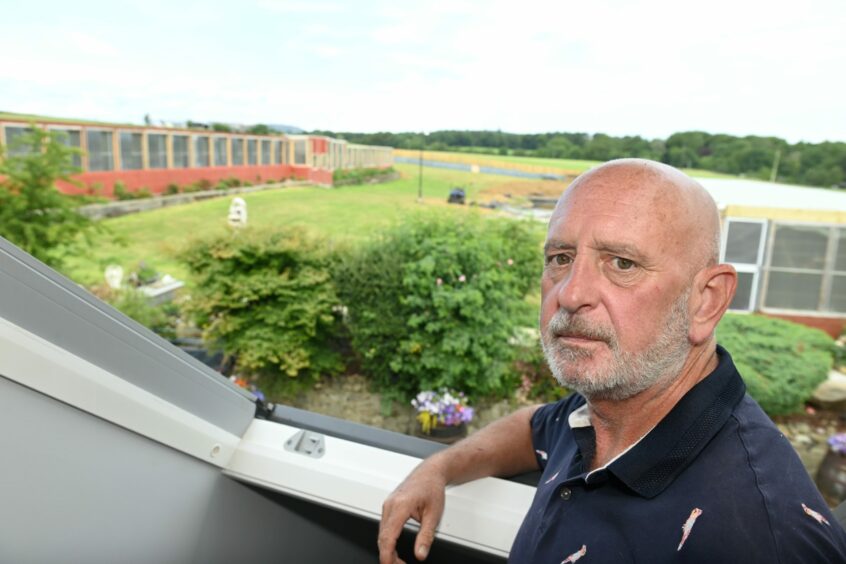
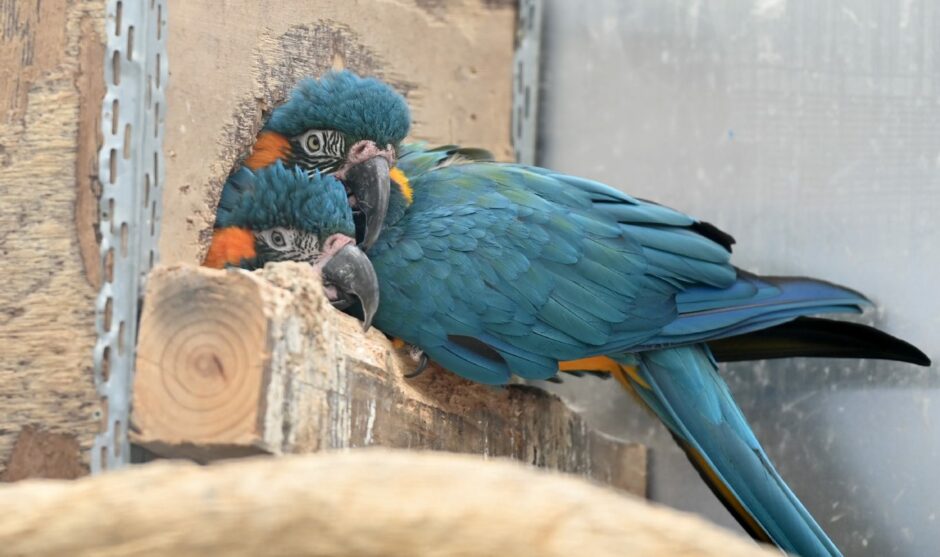
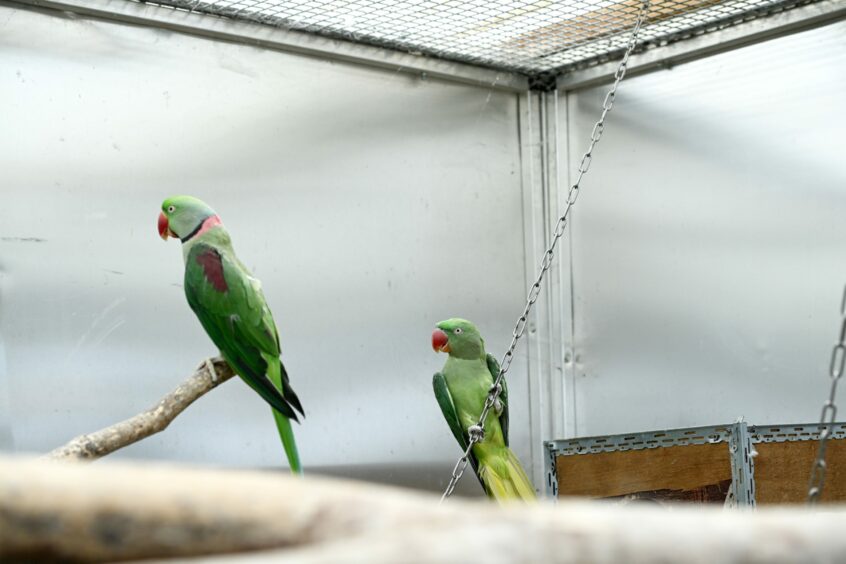
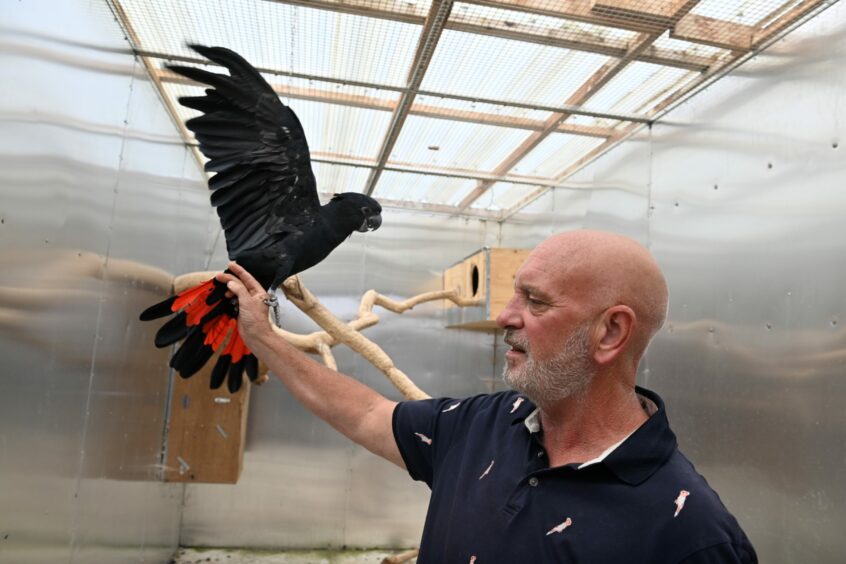
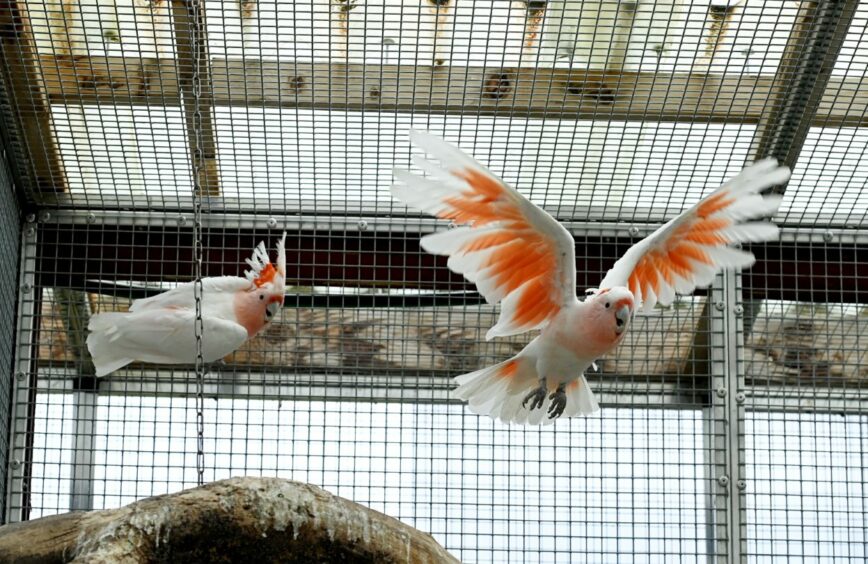
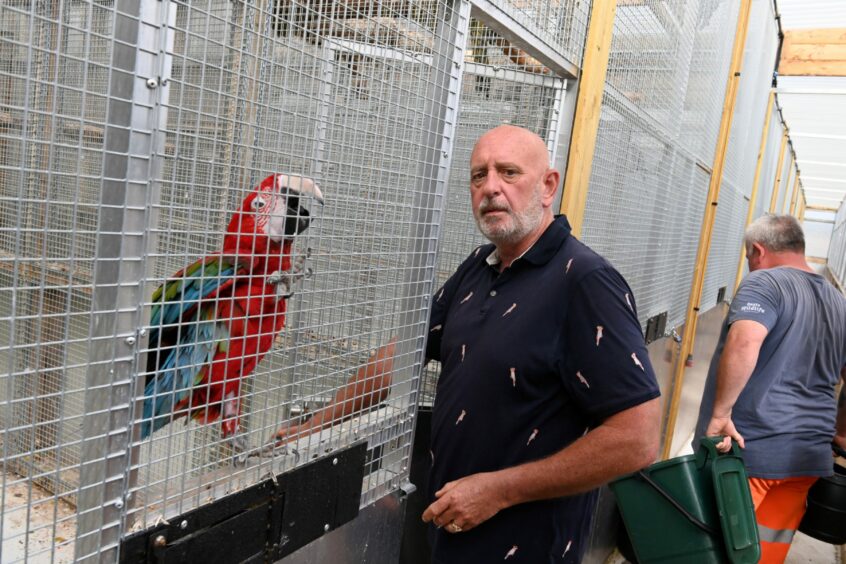
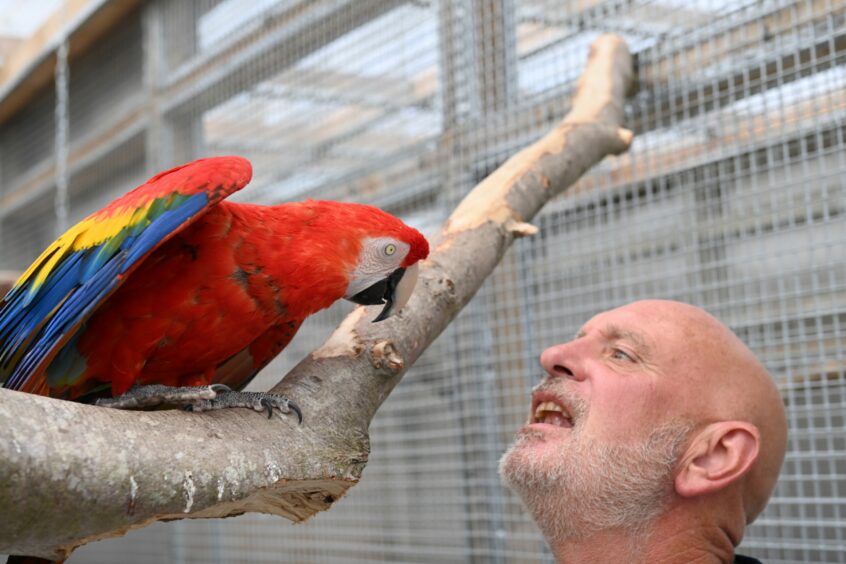
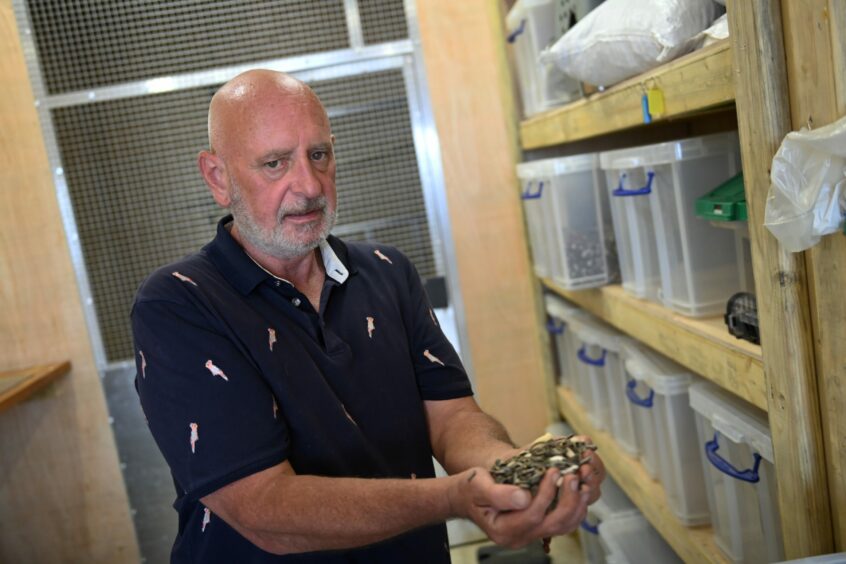
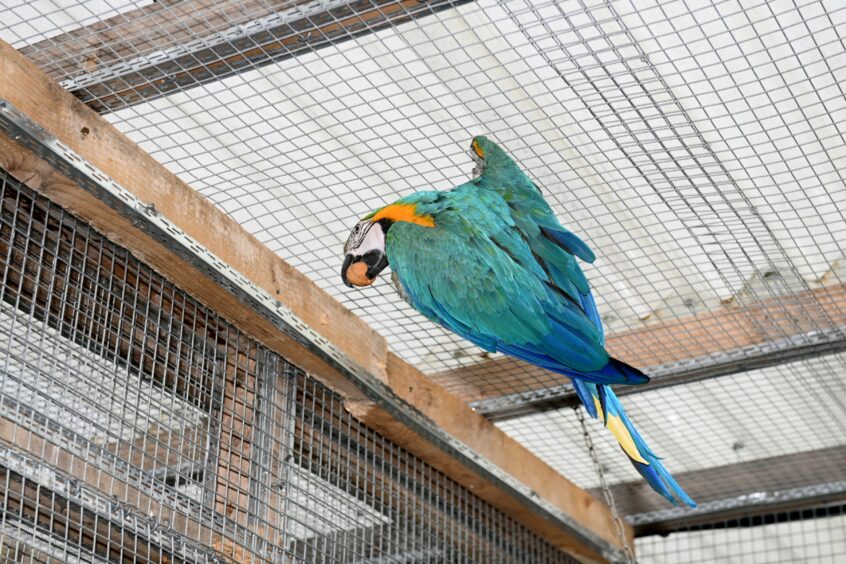
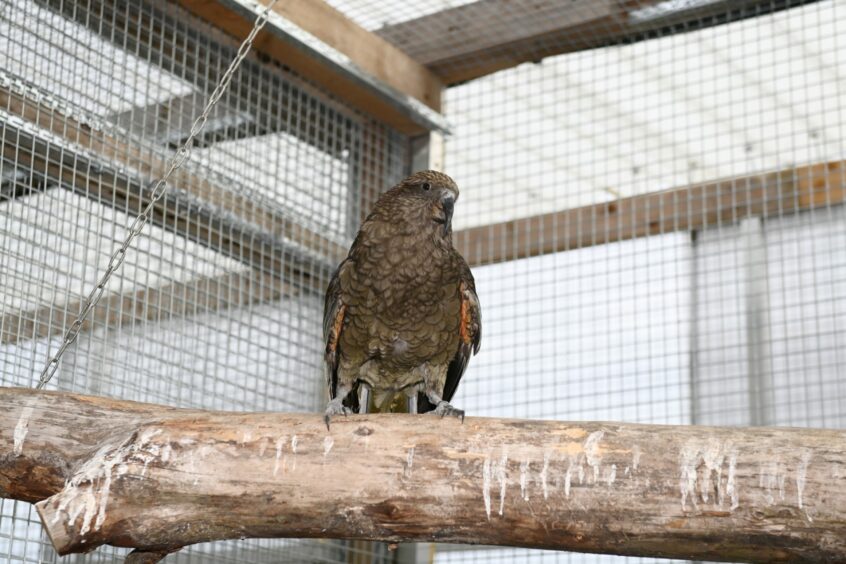
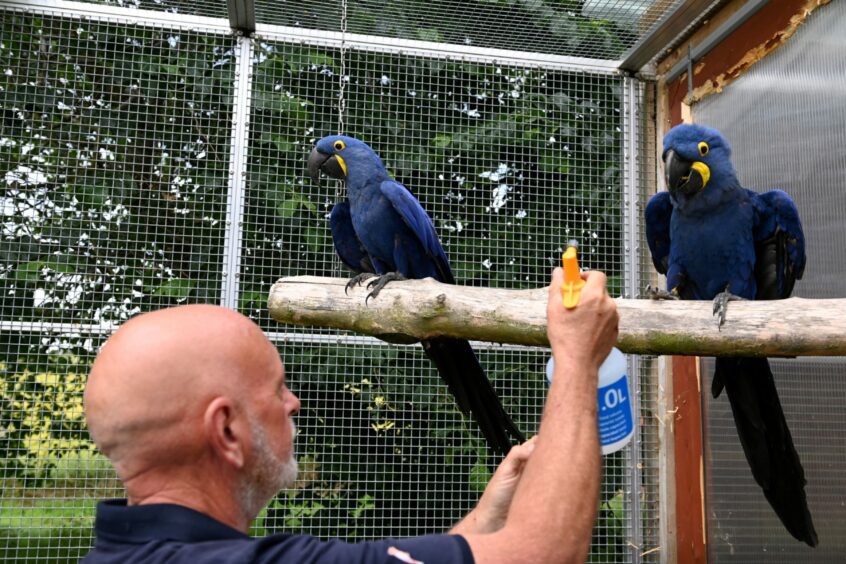
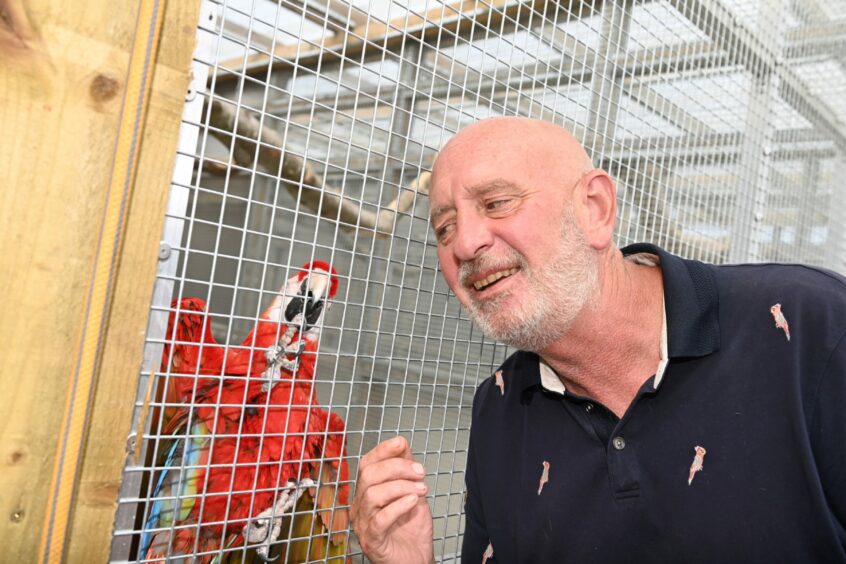
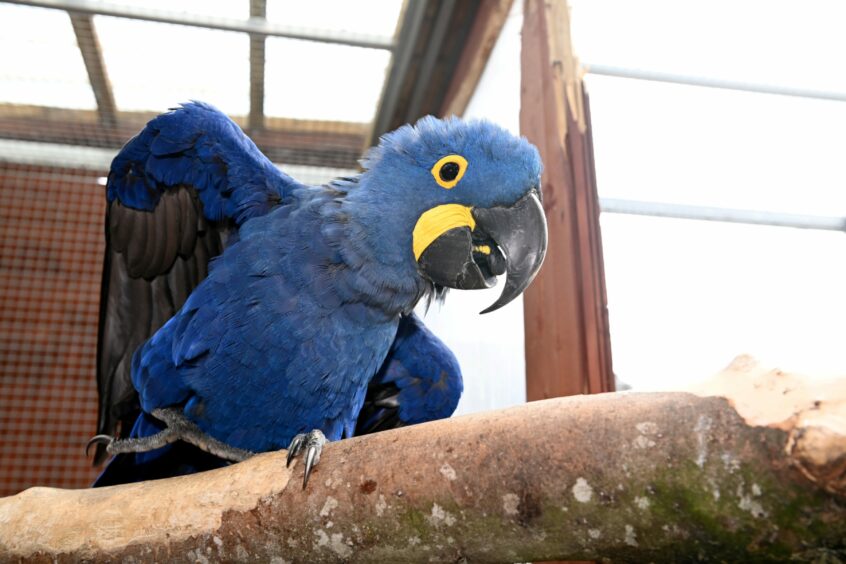
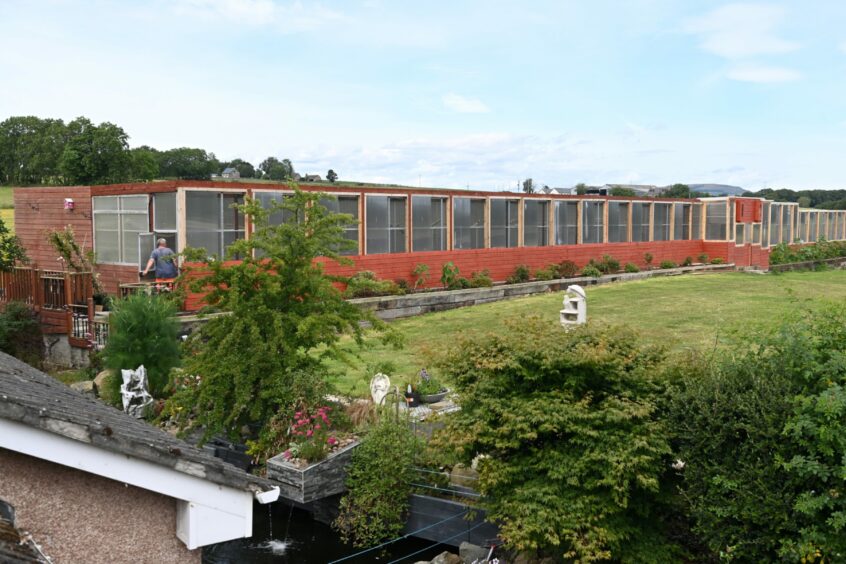
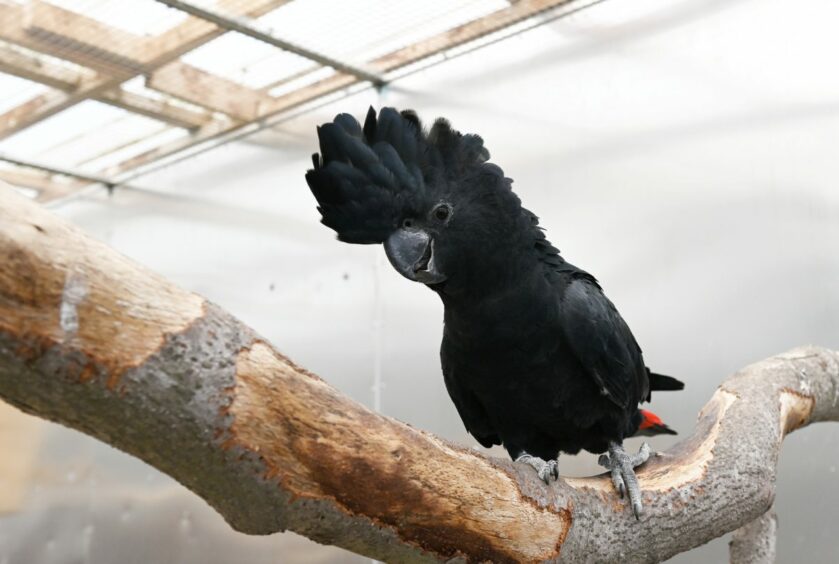
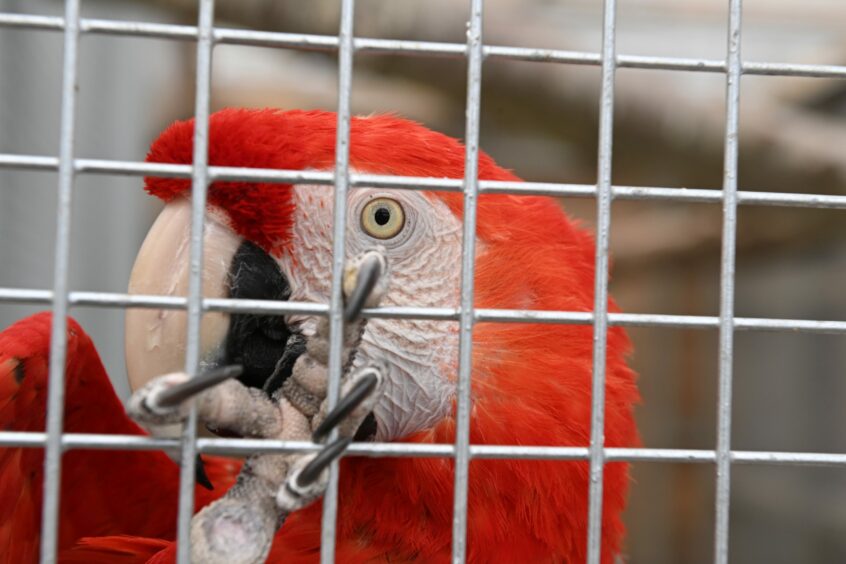
Conversation